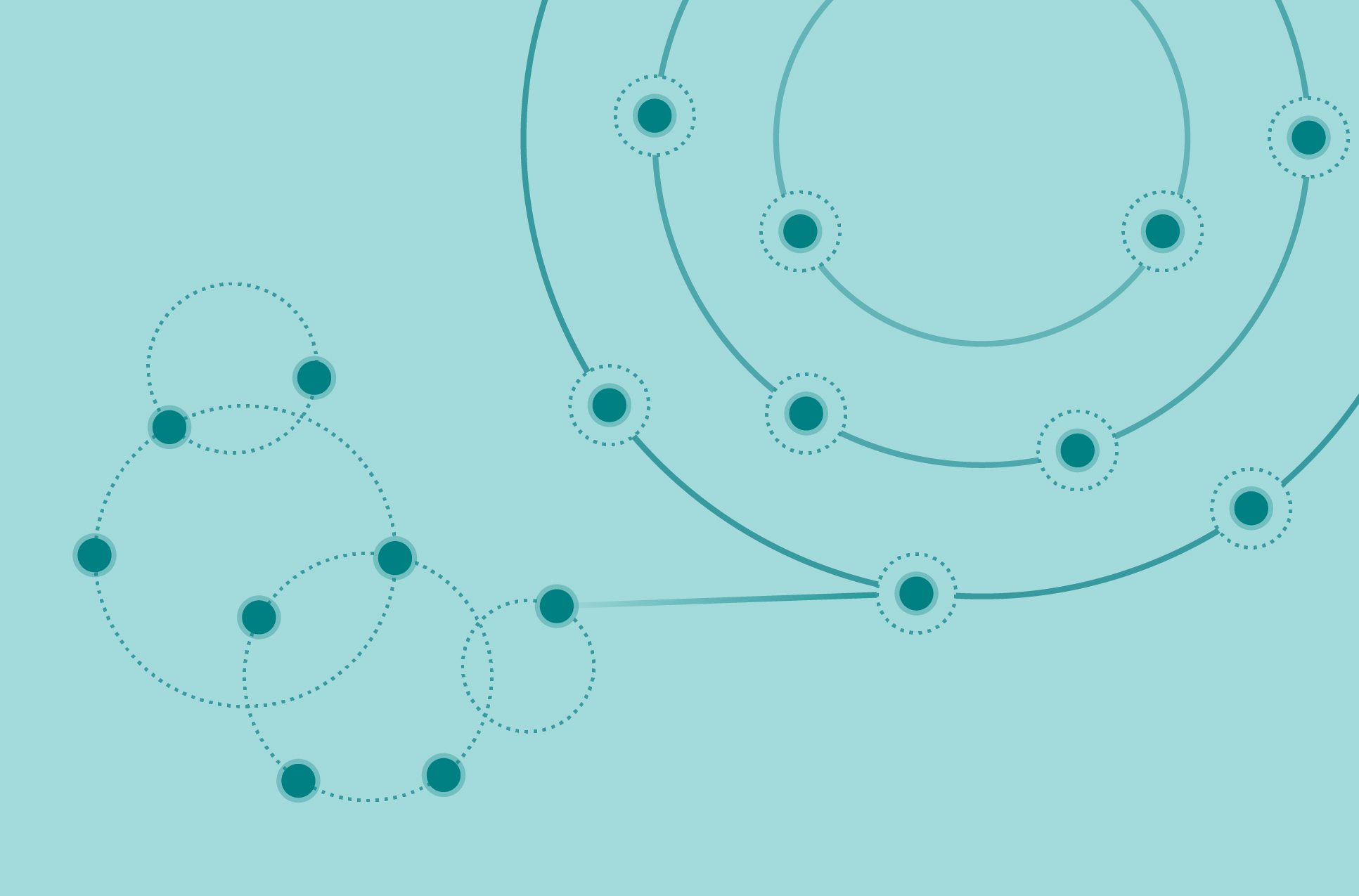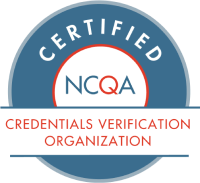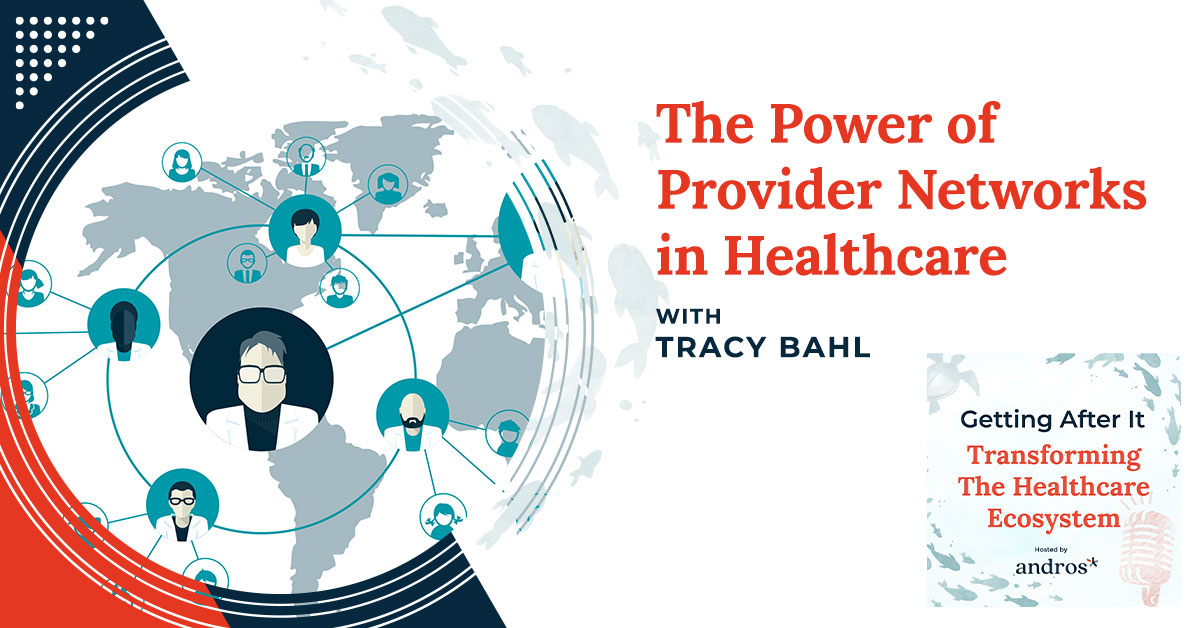
In this podcast episode, Tracy Bahl, the Executive Chairman of andros, joins hosts Mike Simmons and Brett Zelkind to discuss the importance of provider networks in the healthcare industry. Tracy shares his insights on the significant changes he has observed over the past few decades and how these shifts have improved the industry’s ecosystem. With over 30 years of experience in healthcare, Tracy provides valuable insights on topics such as the growth of healthcare, value-based care, and public health emergencies. Tune in to this episode to hear from a seasoned industry expert.
—
Watch the episode here
Listen to the podcast here
The Power Of Provider Networks In Healthcare With Tracy Bahl
Welcome to the show where we explore what’s happening at the intersection of healthcare and technology, and most importantly, the people who are getting after it and making our healthcare system work better. I’m Mike Simmons, the Founder and CEO of andros. I am joined as always by my friend and co-host, Brett Zelkind.
I’m looking forward to having the conversation with Tracy. It’s going to be thrilling.

Welcome to the show. Thank you for being our guest number one. It’s great to have you on.
It is indeed an honor. Thank you.
I always think about introducing you to our readers. We start at the beginning. It seems like a pretty good place to start. Start by talking about where are you from, how’d you grow up, and how you grow up in healthcare. We then can get into some things that you are working on now.
I was born to Wesley and Marian Bahl, a retired Air Force Sergeant who later became a very successful accountant with his own accounting firm in an Air Force base in Rapid City, South Dakota, who had come back a few years later after my dad served his term in Vietnam to live in and grow up in Faribault, Minnesota, a small-town South of Minneapolis.
We go to Gustavus Adolphus College, a college most people can’t pronounce. It is named after the king of Sweden at one point. It was a small liberal arts college in Southern Minnesota and would later get my MBA from Columbia Business School and the London Business School. I had an interest in healthcare from a relatively early age. I originally believed I would be a football coach, and believe that even now, I live out those aspirations in my leadership style unfortunately from time to time.
While I was interested in health, fitness, exercise, and science, in fact, my degree is Business Health and Exercise Science. I found my way into being a cardiac tech and my first job right out of college in Southern California. I found the way to grow my cardiac rehab business was through managed care contracts.
As I began to grow my business, I became more and more familiar with the managed care world. One of those companies recruited me as a 23-year-old provider relations coordinator, the lowest person on the totem pole managing the network of optometrists and dentists in South Central Los Angeles, which challenged me on several fronts. It made me a much better professional and a much better person and set me on my career in managed care and healthcare services overall.
I would go on to lead that department a couple of years later. I witnessed firsthand many of the issues and challenges that andros is solving now around networks and network development. I follow a boss over to Cigna Healthcare where I served for eight years. I led network operations in California. I led a health plan in New York. I led a region of health plans in the Mid-Atlantic, and then ultimately commercial health plans nationally for the last couple of years that I was there.
I follow that same boss over to United Health Group where I would then serve for 10 years, which is 4 years as President of the Enterprise Division and 2 years as Chief Marketing Officer. God knows why I didn’t know anything about marketing, but I found myself as the Chief Marketing Officer of a Fortune 10 company. I learned a lot about go-to-market strategies in that period.
I returned when my boss retired and served as Chief Executive Officer of Uniprise for my last four years there. It was ten in total. Uniprise led the national accounts business, the international business. It was many of our early-stage businesses as well as all of the back office administrative operations for the company including claim processing, call centers, billing banking, eligibility administration, and all of our technology development and infrastructure, which gave me another view on the challenges of networks and how they play out in the patient experience, cost, quality, and the like. I would then go to General Atlantic private equity firm where I spent eight years including three of those as Executive Chairman of MDIV, which later became Change Healthcare. It was another view on networks and the importance of data, quality, and performance around them.
I would return to an operating role at CVS, where I led the paramedic division for five years, and then returned back to the private equity world with General Atlantic. I came back to General Atlantic with a General Atlantic back company in the oncology space called OneOncology. I would follow a partner from General Atlantic over to Welsh, Carson, where I am now as an operating partner and 1 of the 3 managing directors of Valtruis, which is our value-based investing arm. My favorite and coveted role is Executive Chairman of andros.
You accomplished a lot. I have a couple of things I wanted to go back to that I have never had the opportunity to ask you about with two MBAs from Columbia Business School and also the school in London.
The incremental value of a second MBA is absolutely zero, but I was in a joint global program that was done between the London Business School and Columbia Business School that still exists. We were the second class to ever go through it. It allowed you to receive in the end degrees from both institutions. You did classes both in New York and in London, and you alternated month to month for two years. It was interesting.
There’s another piece that I was picking up on with the bio that is worth digging into a little bit. You talk about how you are an operating partner in the work that you do in private equity, but you used the term serve specifically when you were talking about your work in managed care at the beginning of your career. Can you dive in a little bit on how you think about serving as it relates specifically to your experience with the health plans?
In many ways, any corporate role is a bit like a militaristic service. You are serving a mission. I did believe. What attracted me to healthcare in the first place was it allowed me to do something that I could see a direct line of sight to improving people’s lives that if I did it right, I was serving a purpose, a cause, or a mission. In every organization I have worked with, I had a commitment to that mission or purpose including andros at the core.
We do, and what inspires me in our daily work as a team is building the basis and the infrastructure for the delivery of a much better healthcare experience. The healthcare experience isn’t always great for people in our country. That was true in 1984 when I started my career, and it’s sadly true now. That’s at the core of what got me interested in healthcare to begin with and stays at the core now.
Did you come to that understanding intrinsically at the beginning, or did you learn that through people that you worked for over time?
A little bit of both. When I was a high school senior, I went through this process where I wanted to define exactly the role I wanted to have in my career. I established the three fundamental parameters that I wanted any job I ever had to provide. 1) I wanted to have a direct line of sight to improve people’s lives. I wanted my life and my career to return something and be net positive to the world. 2) I wanted the opportunity to lead and build something over the long term. I don’t know whether I’m any good at it or not, but I love leading teams of people and organizations around a purpose and a cause. 3) I wanted the opportunity, not the guarantee, to make a boatload of money. I haven’t ever achieved that, but I have always had the opportunity to.
If you put those three things together, a lot falls off the table, like priesthood and consulting. You can lead something and you can improve people’s lives, but the economics aren’t all that great. There is nothing wrong with any of these occupations. They are phenomenal occupations, but I didn’t enjoy coming in and out of things. I liked being accountable for them over the long term. Healthcare, particularly in the for-profit or public space, gave me the opportunity to do that. I have enjoyed that pursuit. At the same time, I have had incredible role models. As I referenced in my bio, a couple of which I have followed different organizations because they were inspiring and such incredible mentors to me, so I have been blessed in that way. I’d say a little bit of both.
[bctt tweet=”You can lead something, and you can improve people’s lives, but the economics aren’t all that great.” via=”no”]
It’s interesting the role that you had at United as leading the Uniprise division where you started to get some responsibility over systems and technology. I was looking at some statistics before we got started in this conversation. There’s an interesting intersection that’s happened in the healthcare industry over the last several years.
I was looking at a series of numbers from Rock Health that was looking at the amount of money that was invested in healthcare technology companies since the Affordable CARE Act came up online. It’s exceeding $100 billion. It was starting with a humble billion peaking in 2021 with the aftermath of COVID, and then stabilizing again in the $15 billion range per year.
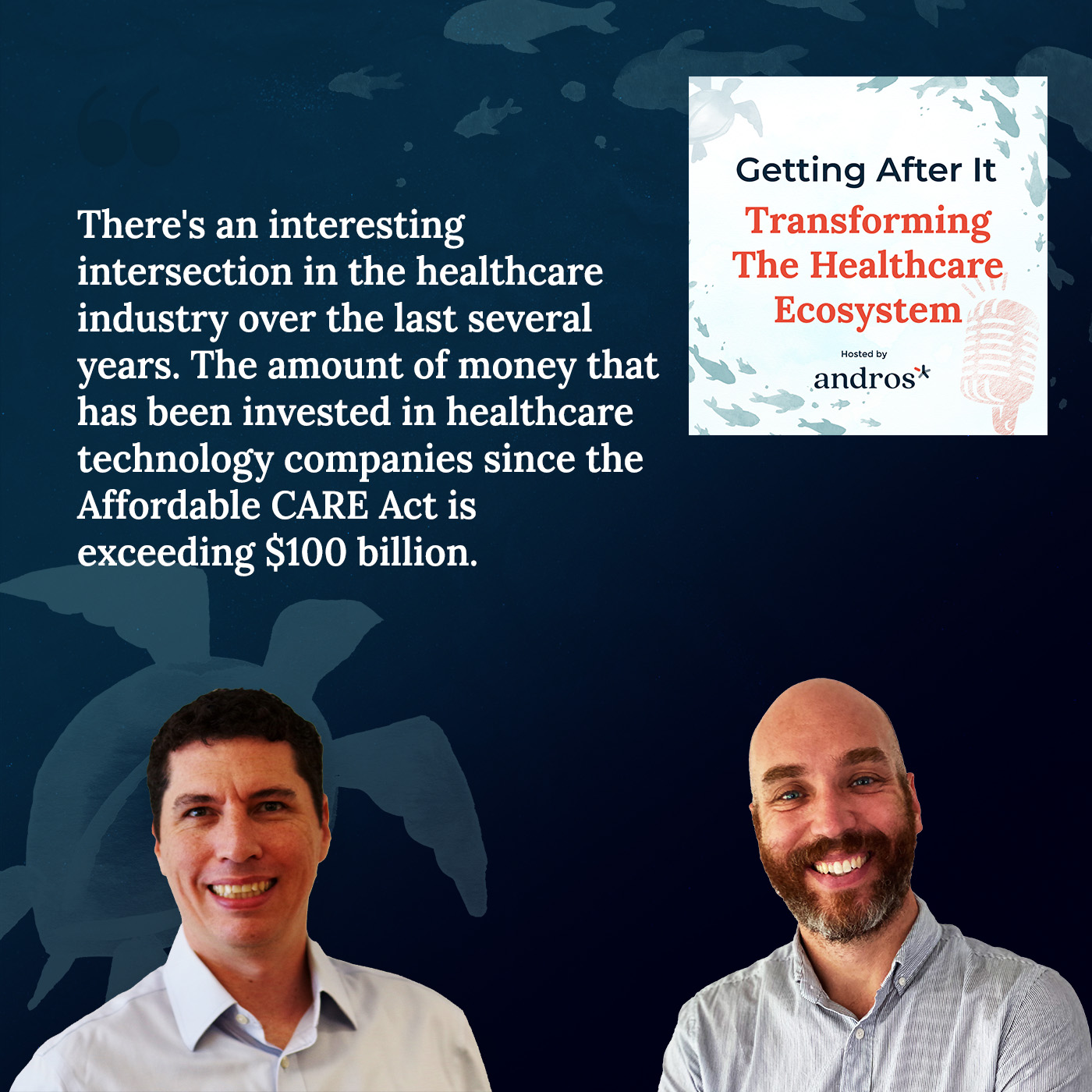
It’s interesting to think a little bit about your perspective on the shifts toward improving the healthcare ecosystem. What have you seen as the most substantial and substantive changes in the healthcare industry over the last decades or a little longer if you want to think about the beginning of the Affordable CARE Act in 2010?
Technology has been an enabler to all of them. Perhaps at the macro level, the most substantive change has been one in focus and attention, balance, and context. That’s best embodied in the term the Quadruple Aim. While that term was made fashionable and coined by the Affordable CARE Act, it was in process well before that.

If you think about the four parts of the Quadruple Aim, cost, quality, access, and the patient experience, we almost evolved in that order. In my day in the 1980s, outside of the original social HMOs that existed primarily in California and Minnesota, the focus of managed care was fundamentally around cost. They were very good at it. They substantively reduced cost relative to the models, primarily indemnity and fee for service that were in place at the time. That was most evidenced in places like Southern California and others, but that was their original focus.
Over the next few years, they almost defensively had to orient to quality in the context of at least proving they weren’t impairing quality at the expense of cost. As we have grown over time, even those two dimensions have matured and become broader in context and balance. Cost has evolved to efficiency and a total cost or population health perspective, acknowledging that we might have to pay more in some areas to experience less cost in others.
Preventative care is probably the easiest example. There are drug therapies that cost more but reduce the medical cost substantially, and there’s been an openness to that thinking. There are dimensions of presenteeism, productivity, and well-being. Now an appropriate focus on the behavioral and mental health associated with that has made cost much broader in context and complexity, which has been great.
Quality is no longer defensive, but it is oriented around how we are improving quality, not just decreasing quality and quality across multiple dimensions. We have added access and access not in terms of broad geographic network type access, which we are at the center of. Also, access in ways that go beyond our typical network definition including social determinants of health and how people have the ability to access healthcare and where they live. Transportation is sometimes at the heart of that, availability in the home, and in other dimensions of access including remote digital monitoring and the like, which I hope we will have a chance to talk about later because that’s an important component there.
[bctt tweet=”Quality is no longer defensive, but it is oriented around how we are improving quality, not just decreasing quality and quality across multiple dimensions.” via=”no”]
Initially, we operated under this Triple Aim idea, the cost, quality, and access. I always felt that as did many others, that left out an important person, and that’s the patient. The Quadruple Aim adds the patient experience and how they experience the healthcare journey and how that relates to their ability to improve their own health and well-being.
Do they have the agency, stewardship, and governance of their own healthcare? Do they have the tools to do that? Do they have an understanding and cohesiveness of their care that is translated in a way they can understand? Those things have been fundamental drivers of everything we do. They are often, if not entirely, enabled by technology and have been driven a lot of the capital investment that you described at the top of the question over the past several years. All of that is very encouraging.
As you were sharing that, I’m thinking back to my own experience at the health plan in the early-2000s. A lot of what is being focused on now in the Quadruple Aim to your point was viewed as important and meaningful work, but we lacked the technology to effectively and efficiently deliver it. If we think about managing the total cost of care or closing care gaps, it was blunt instruments in a tremendous amount of professional services and resources trying to get that done. Whereas now it is increasingly the ability to access the data, exchange the information, and engage in all forms of modalities, or what is ultimately enabling this transformation and improvement and access to achieving this Quadruple Aim.
If we go to the next step and if we think a little bit about the work that we do at andros, how have you seen the provider network, perhaps even the attributed value of the provider network impacting the ability to achieve this Triple Aim that we talked about, and how the network might be thought of any differently than it was several years ago?
It’s interesting. I’m old, so my bio is lengthy as a function of age. Over that 30-some years in healthcare, the role of networks has evolved almost 360 degrees, almost full circle in that. When we started, it was the center of everything. When you wanted to work in managed healthcare, you wanted to be in networks. That was where the action was. It was the center of everything. That’s what drove everything.
That was the fundamental lever through which we achieved cost improvement and was the basis of our marketing, competitiveness, and the like. By the late-’80s and early-2000s, there was a lot of conjecture within our industry and particularly United Health Group that maybe networks wouldn’t be needed anymore.
They were becoming very ubiquitous. Everyone had a big network. It was hard to differentiate. In many ways, we thought our differentiation would be on things other than the network. It would be on how we guided you to the right physicians, the quality of the care guidance and coordination we provided, the nature of our benefits and the design, and how we managed them.
We almost thought networks would go away. With consumer-directed care where you had transparency around networks, you had this idea that people could choose wherever they wanted to go and incur the benefit-cost of doing so. We have, over the past years, come full circle where networks are, once again, at the center of what we do as an industry. They have become more important to a growing number of participants in the healthcare space for more reasons.
They are increasingly important not only because you need to be compliant. If you look at the way this administration is evolving networks and government programs to include things like role access and diversity, equity, and inclusion, both are very appropriate and thoughtful objectives. Those are going to put increasing importance on how you define networks.
With the element of access that we talked about, it’s no longer having a physician within X miles of your residence, but how many of those physicians are taking new patients and what’s the wait time for those visits? That’s the next level of access. Once you are in the room, does that physician understand not only your clinical condition but your environmental condition and your life? As we have learned, so much of that impacts your ability to govern your own health and well-being.
That is the increasing importance of networks and more people and organizations. We talked about the development of a highly specialized total population focus and getting very specific about clinical conditions that serve those unique populations. There are organizations that serve autism patients and need a network of specialists that can be aligned with their program.
The same with kidney care, cardiology, and other specialties that are looking for a network or a group of defined care providers that align well with a value-based orientation, and love being held accountable for all four of those things: cost, quality, access, and the patient experience. Full circle at the center and coming back to the center again but in a very different way to more people in a growing context, we see more and more of this interest every day.
Tracy, this has been great. I appreciate your time and insights.
I enjoyed this. Thanks for giving me the opportunity. I’m so proud of what andros does every day. I’m excited about our future.
Important Links
About Tracy Bahl
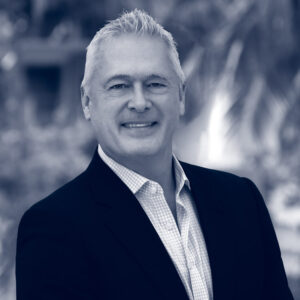 Tracy Bahl is a Managing Director of Valtruis and an Operating Partner at WCAS, having joined in 2021 focusing on healthcare investments. He was formerly the President and Chief Executive Officer of OneOncology, a company dedicated to serving all those living with cancer through a network of leading community oncology practices across the U.S.
Tracy Bahl is a Managing Director of Valtruis and an Operating Partner at WCAS, having joined in 2021 focusing on healthcare investments. He was formerly the President and Chief Executive Officer of OneOncology, a company dedicated to serving all those living with cancer through a network of leading community oncology practices across the U.S.
Prior to OneOncology, Mr. Bahl served as Executive Vice President of Health Plans for CVS Health; Executive Chairman of Emdeon, an industry leading healthcare information and transaction services company; Special Advisor at General Atlantic; Chief Executive Officer of Uniprise, a UnitedHealth Group Company; and held various executive positions at CIGNA HealthCare. Mr. Bahl earned MBA degrees from Columbia University and the London Business School.
